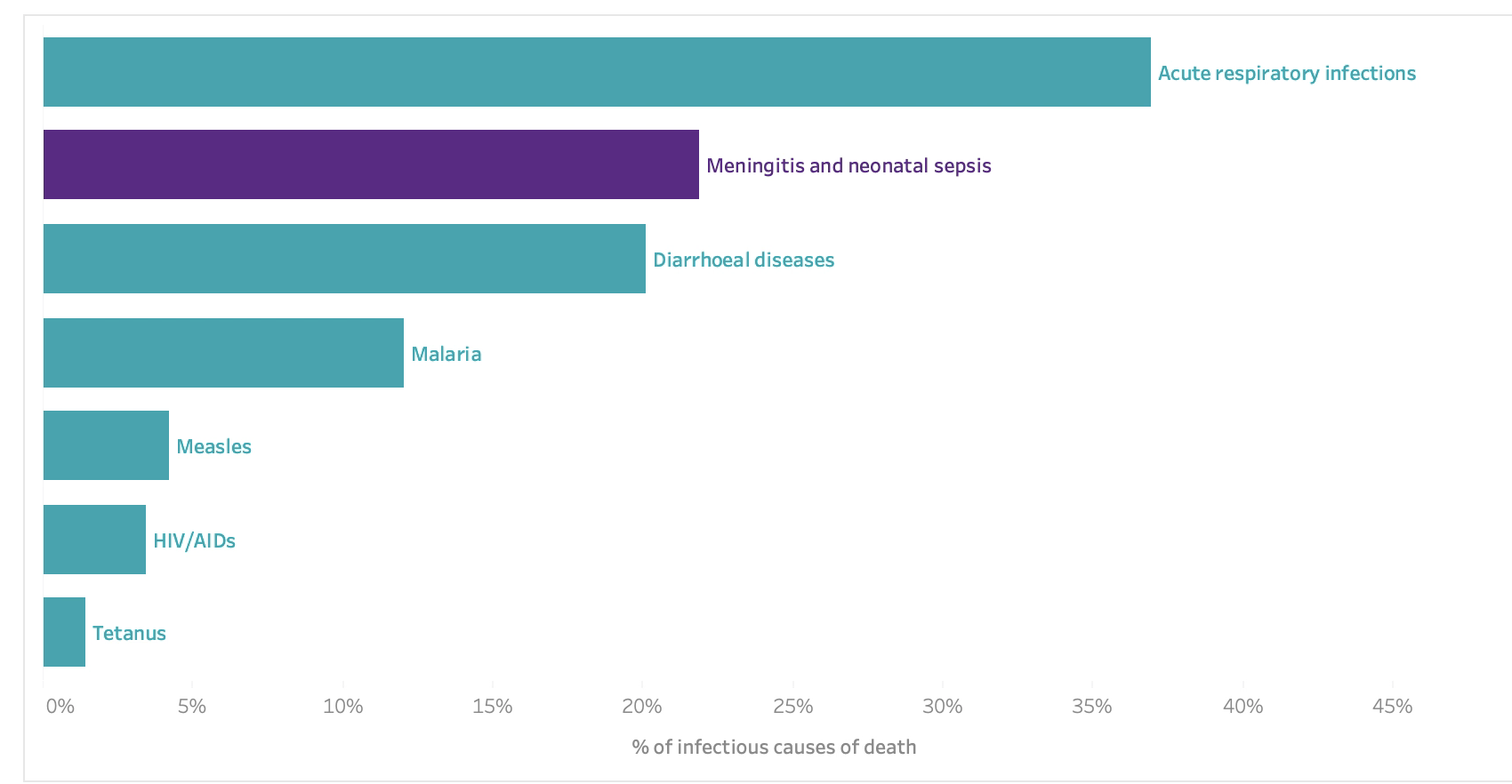- Estimates for meningitis as a cause of death differ widely across global health models and may be underestimated.
- Globally, meningitis and neonatal sepsis are the second-largest infectious killers of children under five, according to World Health Organization (WHO) estimates
- Whilst deaths from measles and tetanus in children under five years of age are estimated to have decreased by 86% and 92%, respectively, between 1990 and 2017, deaths from meningitis decreased by just 51%
- WHO estimates show meningitis and neonatal sepsis were responsible for more deaths in under-fives than malaria, measles, HIV and tetanus combined
- Despite its burden, meningitis is seldom, if at all, mentioned in critical global and regional health documents

Leading infectious causes of death in children under 5 in 2017. Source: World Health Organization Disease Burden and Mortality Estimates. Child Causes of Death, 2000–2017
Meningitis is not being prioritised appropriately, according to new research. Difficulties collecting accurate data on meningitis has led to the diseases being missed from key global and regional health plans, despite it being a leading killer of children.
The research was published in the journal Microorganisms. A new
global plan to defeat meningitis has been developed as a result, which will improve meningitis surveillance and data and drive action to help save lives.
Among preventable diseases, meningitis has one of the highest fatality rates and can cause devastating epidemics. It is a complex disease caused by a range of bacteria. When these bacteria enter the body, they can lead to swelling around the brain (meningitis) or affect the whole body (sepsis). Meningitis and sepsis can occur together, and in new-borns, it is almost impossible to distinguish between the two on the basis of symptoms.
As the causes and symptoms are often the same, this analysis argues that grouping meningitis and neonatal sepsis together will help policymakers and health workers prioritise appropriate responses.
Using WHO data, this approach identified that meningitis and neonatal sepsis collectively were the second-largest infectious killer of children under five years.
Several vaccines are available to protect against the most common causes of meningitis.
Meningitis Research Foundation, working with the World Health Organization, Institute for Health Metrics and Evaluation, Johns Hopkins Bloomberg School of Public Health and the Universities of Bristol and Cambridge, analysed infectious diseases estimates from a range of sources in a bid to paint a clearer picture of the burden of meningitis.